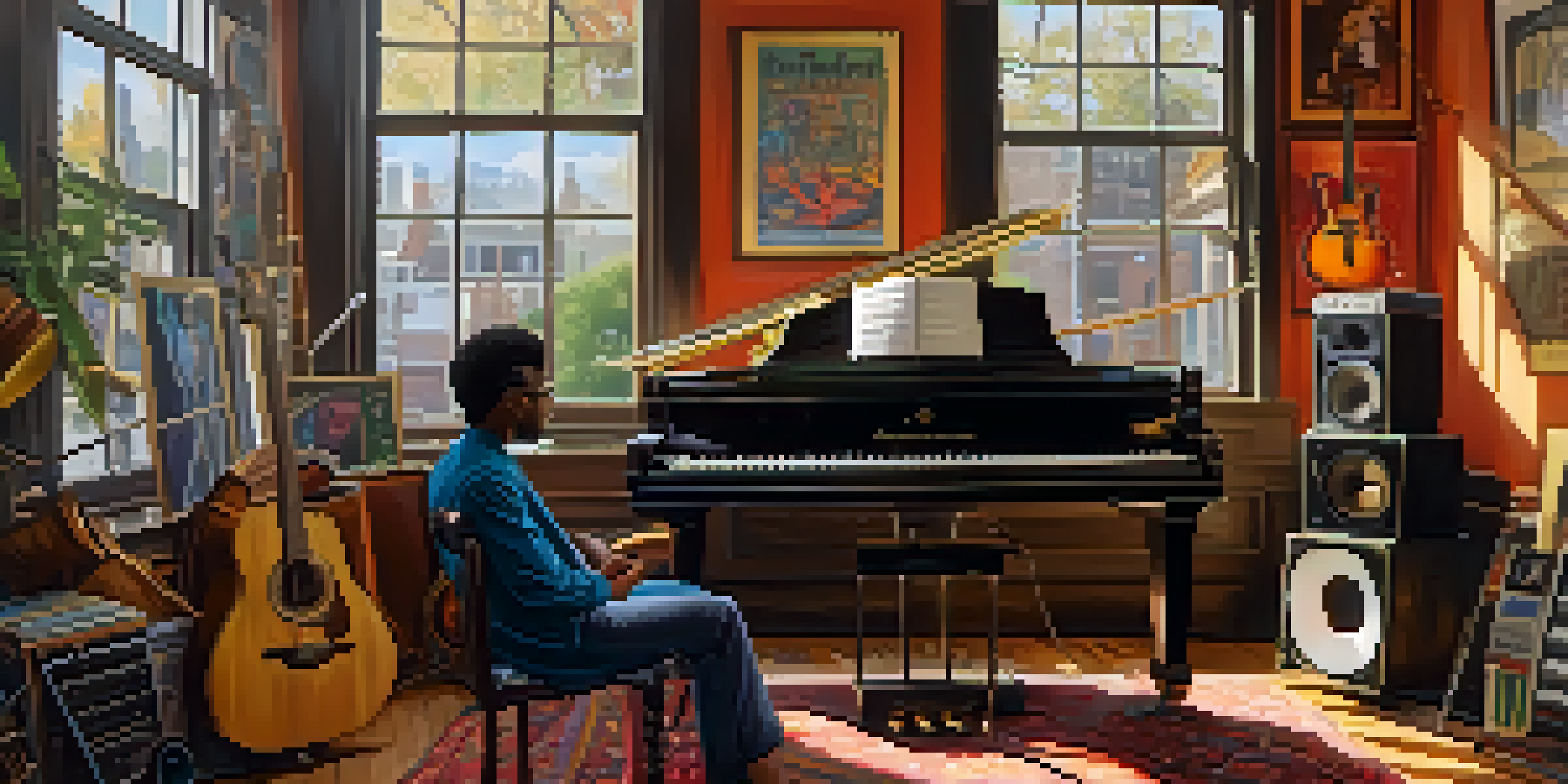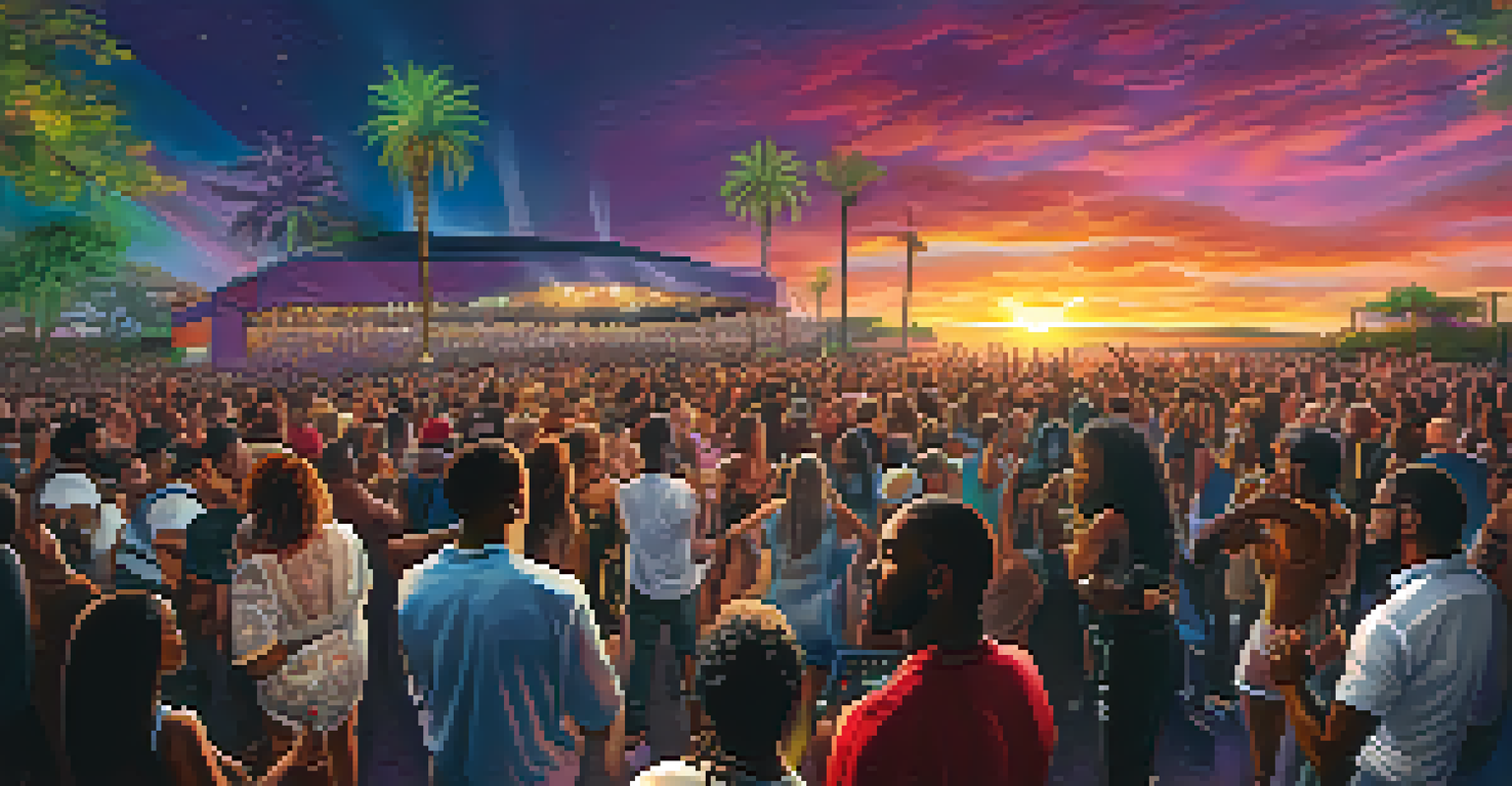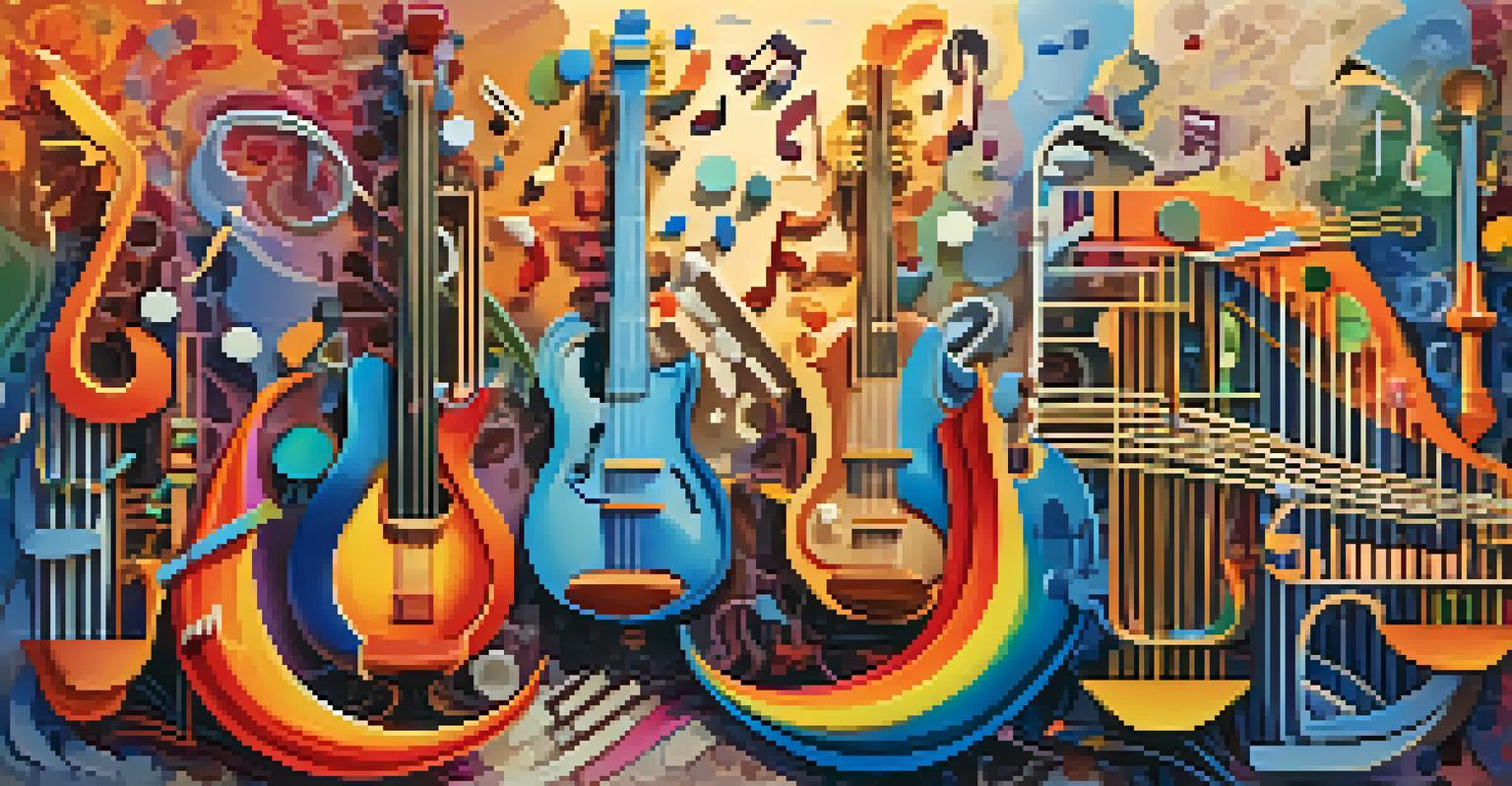Different Genres: Collaborating Across Musical Styles

Understanding Musical Genres and Their Unique Flavors
Musical genres are like different spices in a kitchen; each one brings its own flavor to the table. From the soulful rhythms of jazz to the electrifying beats of electronic dance music, each genre has its own identity and history. Understanding these distinct characteristics is crucial for artists looking to collaborate across styles. By recognizing what makes each genre unique, musicians can better appreciate the potential that lies in fusion.
Music is the universal language of mankind.
For instance, consider how rock and hip-hop have combined to create powerful anthems that resonate with diverse audiences. These collaborations allow artists to push the boundaries of their creativity, resulting in fresh sounds that captivate listeners. By exploring the roots of each genre, musicians can find common ground and inspiration that lead to innovative partnerships.
Ultimately, the beauty of music lies in its ability to transcend boundaries. When artists embrace the diversity of genres, they can create something truly special. This understanding not only enhances their artistry but also enriches the listening experience for fans.
The Role of Collaboration in Creating New Sounds
Collaboration is at the heart of musical innovation, allowing artists to merge their talents and perspectives. When musicians from different genres come together, they open the door to endless possibilities. This exchange of ideas can lead to groundbreaking sounds that neither artist could achieve alone. For example, a country singer might collaborate with a pop producer to create a catchy crossover hit.

By blending their unique styles, these artists can reach new audiences and breathe fresh life into their music. This is evident in the rise of genre-bending artists who refuse to be confined to a single category. Their willingness to experiment leads to exciting new tracks that challenge traditional definitions of music.
Genres as Unique Musical Spices
Each musical genre brings its own flavor, allowing artists to explore collaboration and innovation.
Moreover, collaboration fosters a sense of community among artists. By working together, musicians can support one another and share their experiences, creating a more inclusive industry. This camaraderie not only enhances their individual artistry but also strengthens the musical landscape as a whole.
Famous Collaborations That Redefined Genres
Throughout music history, there have been iconic collaborations that have redefined genres and left a lasting impact. One such example is the partnership between David Bowie and Queen on the classic 'Under Pressure.' The fusion of Bowie's glam rock and Queen's operatic style created a timeless anthem that continues to resonate today.
The beauty of music is that it transcends cultural boundaries and connects people in ways that words cannot.
Similarly, the collaboration between Latin musician Carlos Santana and rapper Rob Thomas on 'Smooth' brought together rock and Latin rhythms, leading to a chart-topping success. This melding of styles not only showcased their individual talents but also introduced new listeners to each genre. Such collaborations highlight how artists can elevate their work by exploring the unfamiliar.
These examples demonstrate that music is a constantly evolving art form. When artists dare to step outside their comfort zones and collaborate, they can produce something truly remarkable. The legacy of these collaborations inspires future generations of musicians to take risks and experiment with their sound.
The Challenges of Collaborating Across Genres
While collaborating across genres can yield amazing results, it also comes with its fair share of challenges. One of the primary obstacles is the differing creative processes among artists. For instance, a classical musician may approach songwriting with a structured mindset, while a punk rocker might prefer a more spontaneous style. Finding a common ground can be tricky, but it's essential for a successful collaboration.
Communication plays a vital role in overcoming these challenges. Artists must be open to discussing their ideas and respecting each other's artistic visions. This dialogue can help bridge the gap between genres and lead to a harmonious blend of styles. It's all about finding that sweet spot where both artists feel heard and valued.
Collaboration Sparks New Sounds
When artists merge their talents across genres, they create groundbreaking music that expands their reach.
Additionally, there's the risk of misrepresenting a genre when collaborating. It's crucial for artists to stay true to their roots while exploring new sounds. This balance ensures that the collaboration is authentic and resonates with fans from both backgrounds.
The Impact of Technology on Genre Collaboration
In today's digital age, technology has revolutionized the way artists collaborate across genres. With the help of software and online platforms, musicians can easily connect and create music from anywhere in the world. This accessibility has led to an explosion of cross-genre collaborations, making it easier than ever for artists to experiment.
For instance, platforms like SoundCloud and Bandcamp allow musicians to share their work and collaborate with others, regardless of geographical barriers. This democratization of music-making has created a vibrant community of artists eager to explore and innovate. As a result, listeners are treated to an ever-growing array of sounds and styles.
Moreover, technology has also made it possible to manipulate and blend genres in ways that were previously unimaginable. Artists can layer sounds, remix tracks, and create entirely new compositions with just a few clicks. This flexibility empowers musicians to push the boundaries of their creativity and redefine what music can be.
The Future of Musical Genre Collaborations
As we look to the future, the landscape of musical genre collaborations is more exciting than ever. The rise of global music trends means that artists are increasingly influenced by sounds from around the world. This fusion of cultures and styles is likely to lead to even more innovative collaborations that challenge traditional genre boundaries.
Additionally, as more artists embrace the idea of genre fluidity, we can expect to see a shift in how music is categorized. The lines between genres are becoming increasingly blurred, allowing for a more inclusive and diverse musical landscape. This evolution reflects the changing tastes of listeners and the desire for authenticity in music.
Diversity Enriches Musical Landscapes
Embracing diverse genres fosters deeper connections and reflects the richness of human experiences in music.
Ultimately, the future of musical genre collaborations holds endless possibilities. As artists continue to explore and experiment, we can anticipate a wave of new sounds that inspire and unite audiences across the globe. The journey of collaboration is just beginning, and it's one that promises to be filled with creativity and innovation.
Embracing Diversity in Musical Collaborations
At the heart of successful musical collaborations is the celebration of diversity. Embracing different genres allows artists to expand their horizons and tap into a wealth of creative potential. This diversity not only enriches the music itself but also fosters a deeper understanding and appreciation of various cultures and traditions.
When artists share their unique perspectives, they create a tapestry of sound that reflects the richness of human experience. This fusion of ideas and influences can lead to powerful messages that resonate with audiences on multiple levels. For example, a collaboration between a hip-hop artist and a traditional folk musician can highlight social issues while also showcasing the beauty of cultural exchange.

Ultimately, embracing diversity in musical collaborations is about more than just creating new sounds; it's about building connections and breaking down barriers. In a world that often feels divided, music has the power to unite people from different backgrounds and walks of life, reminding us of our shared humanity.